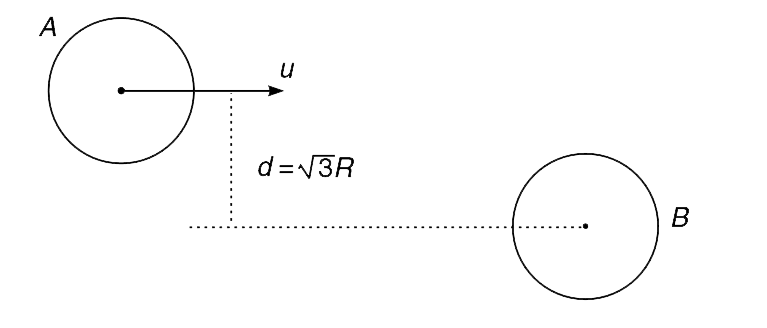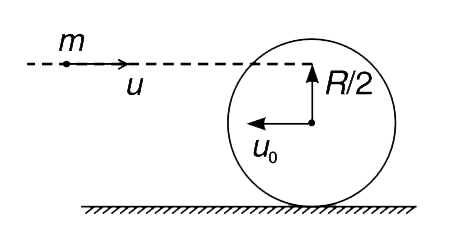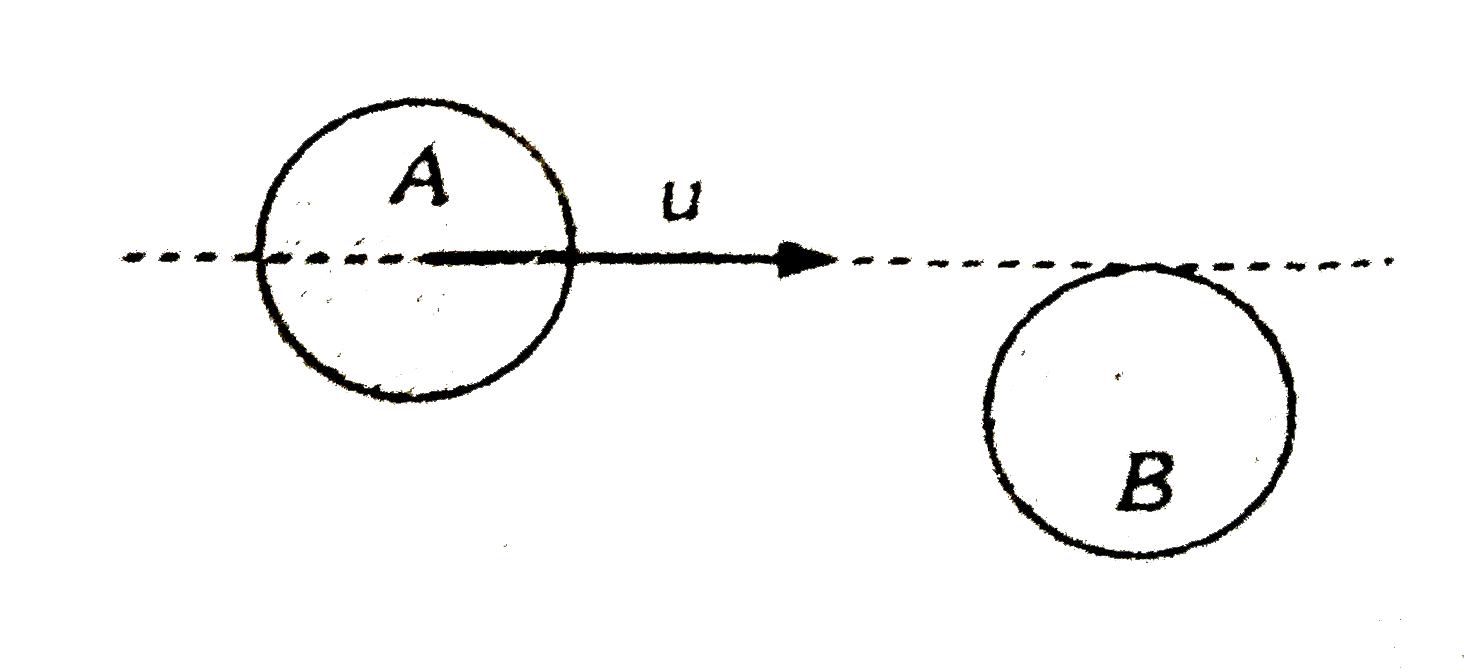A smooth ball A travels towards another identical ball B with a velocity u. Ball B is at rest and the impact parameter d is equal to where is radius of each ball. Due to impact the direction of motion of ball A changes by . Find the velocity of B after the impact. It is given that collision is elastic

The correct Answer is:
Step by step video, text & image solution for A smooth ball A travels towards another identical ball B with a velocity u. Ball B is at rest and the impact parameter d is equal to sqrt(3) R where R is radius of each ball. Due to impact the direction of motion of ball A changes by 30^(@). Find the velocity of B after the impact. It is given that collision is elastic by Physics experts to help you in doubts & scoring excellent marks in Class 11 exams.
Topper's Solved these Questions
Similar Questions

A heavy ball of radius R is travelling on a smooth horizontal surface with a velocity of u0 towards left. A horizontally moving small ball of mass m strikes it at a height R2 above the centre while travelling with velocity u towards right.
(a) After collision the small ball moves in vertically upwards direction with velocity u. Prove that this can happen only if u>√3u0
(b) Find the velocity of small ball after collision if the collision is elastic and the balls are smooth.View SolutionA disk sliding with velocity u on a smooth horizontal plane strikes another identical disk kept at rest as shown in the figure. If the impact between the disks is perfectly elastic impact, find velocities of the disks after the impact.
 View Solution
View Solution
Knowledge Check
- Question 1 - Select One or More
A ball moving with a velocity v hits a massive wall moving towards the ball with a velocity a. An elastic impact lasts for time △t
AThe average elastic force acting on the ball is [m(u+v)]/△tBThe average elastic force acting on the ball is [2m(u+v)]/△tCThe kinetic energy of the ball increases by 2mu(u+v).DThe kinetic energy of the ball remains the same after the collision. - Question 2 - Select One or More
A ball moving with a velocity v hits a massive wall moving towards the ball with a velocity a. An elastic impact lasts for time △t
AThe average elastic force acting on the ball is m(u+v)ΔtBThe average elastic force acting on the ball is 2m(u+v)ΔtCthe kinetic energy of the ball increases by 2mu (u + v)Dthe kinetic energy of the ball does not change - Question 3 - Select One
The ball A collides elastically with an identical ball B with a speed v. The ball B touches another identical ball C. The velocity of C, after the impact, is equal to
 AvBv/2Cv/4Dnone of these
AvBv/2Cv/4Dnone of these
2kg ball moving at 6ms−1 collides head on with a 3kg ball moving in the opposite direction at 12m/s .The velocity of each ball after the impact, if the coefficient of restitution is 1/2, is ?
View SolutionA ball moving with a velocity v strikes a wall moving toward the wall with a velocity u. An elastic impact occurs. Determine the velocity of the ball after the impact. What is the cause of the change in the kinetic energy of the ball ? Consider the mass of the wall to be infinitely great.
 View Solution
View SolutionA 1kg ball moving at 12m/s collides head on with a 2g ball moving in the opposite direction at 24m/s. The velocity of each ball after the impact, if the coefficient of restitution is 2/3 is
View SolutionA ball moving with a speed of 9m/s strikes an identical ball at rest, such that after the collision, the direction of each ball makes an angle of 30∘ with the original line of motion. Find the speeds of the two balls after collision.
View SolutionA ball moving with a velocity of 6 m/s strikes an identical stationary ball. After collision each ball moves at angle of 30∘ with the original line of motion. Assuming that the collision is elastic, what are the speeds of the balls after the collision?
View Solution

